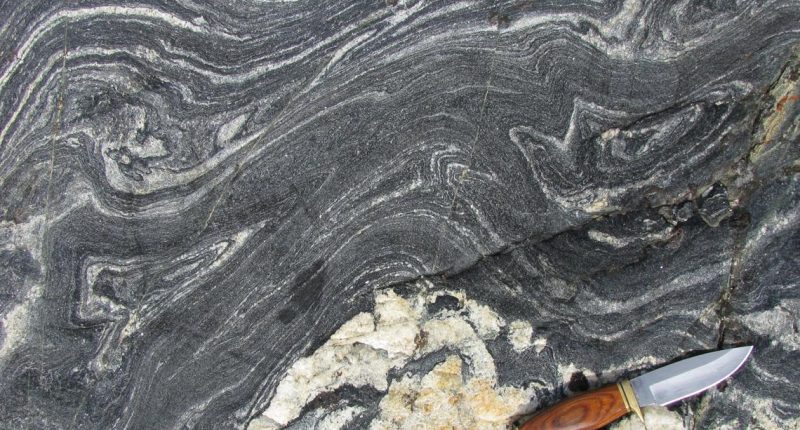Share this @internewscast.com
Samples from a new site place the rocks at approximately 4.16 billion years old, in the earliest period of Earth’s history.
NEW YORK — Scientists have identified what could be the oldest rocks on Earth from a rock formation in Canada.
The Nuvvuagittuq Greenstone Belt, located on the eastern shore of Hudson Bay in Quebec, is famous for its very ancient rocks, which appear as gray stone plains with streaks. However, the precise age of these rocks is a topic of scientific debate.
Research conducted about twenty years ago suggested that these rocks might be as ancient as 4.3 billion years, dating back to the very beginning of Earth’s history. Nevertheless, other researchers, employing a different dating technique, refuted this, proposing instead that ancient contaminants distorted the age results, implying the rocks were more likely around 3.8 billion years old.
In a recent study, scientists sampled a different part of the rock formation and employed the two earlier dating techniques, which involve analyzing the decay of certain radioactive elements over time. They concluded that the rocks are approximately 4.16 billion years old.
The different methods “gave exactly the same age,” said study author Jonathan O’Neil with the University of Ottawa.


The new research was published Thursday in the journal Science.
Earth formed about 4.5 billion years ago from a collapsing cloud of dust and gas soon after the solar system existed. Primordial rocks often get melted and recycled by Earth’s moving tectonic plates, making them extremely rare on the surface today. Scientists have uncovered 4 billion-year-old rocks from another formation in Canada called the Acasta Gneiss Complex, but the Nuvvuagittuq rocks could be even older.
Studying rocks from Earth’s earliest history could give a glimpse into how the planet may have looked — how its roiling magma oceans gave way to tectonic plates — and even how life got started.
“To have a sample of what was going on on Earth way back then is really valuable,” said Mark Reagan with the University of Iowa, who studies volcanic rocks and lava and was not involved with the new study.
The rock formation is on tribal Inukjuak lands and the local Inuit community has temporarily restricted scientists from taking samples from the site due to damage from previous visits.
After some geologists visited the site, large chunks of rock were missing and the community noticed pieces for sale online, said Tommy Palliser, who manages the land with the Pituvik Landholding Corp. The Inuit community wants to work with scientists to set up a provincial park that would protect the land while allowing researchers to study it.
“There’s a lot of interest for these rocks, which we understand,” said Palliser, a member of the community. “We just don’t want any more damage.”


The Associated Press Health and Science Department receives support from the Howard Hughes Medical Institute’s Department of Science Education and the Robert Wood Johnson Foundation. The AP is solely responsible for all content.
Copyright 2025 Associated Press. All rights reserved. This material may not be published, broadcast, rewritten, or redistributed.
















